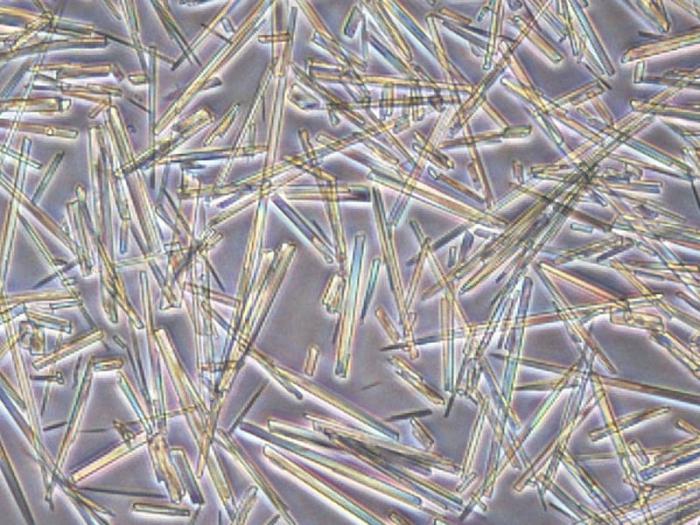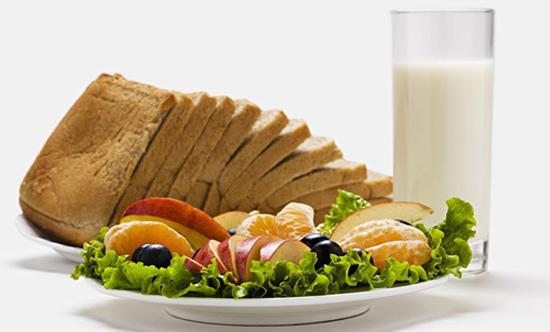According to statistics, every one hundredth person on the planet suffers from arthritis, and about 2% of the population over 40 years old are already familiar with the symptoms of gout firsthand. These diseases cause a lot of trouble: pain, stiffness of movements. They can even lead to disability. The main component in the treatment of arthritis and gout is a diet. Its observance guarantees a decrease in the intensity of the symptoms of these diseases and normalization of the general condition of the body.

What is arthritis?
Arthritis is a disease that is characterized by inflammatory processes in the joints. It is manifested by pain, swelling, increased sensitivity, redness and fever of the skin area over the affected area, stiffness of movements. In order for the disease to not progress, you need to lead a correct and active lifestyle. A diet with arthritis and arthrosis is very important , compliance with which leads to a decrease in the manifestation of symptoms of the disease.
Usually the disease affects the joints of the hands and feet. But the treatment and diet for arthritis of the knee joint, elbow or any other remain unchanged.
Gout is more than just joint pain.
A special type of arthritis associated with metabolic disorders is gout. It used to be called the "disease of the aristocrats," who could afford the excesses in food. The right diet for gout and arthritis is the first and main step to recovery.

The disease occurs against the background of increased formation of uric acid in the body or a decrease in its excretion. Gout is manifested by pain, hyperemia and hyperthermia of the skin over the joint, as well as stiffness of movements. Over time, formations of uric acid salt crystals, tofus, appear on unhealthy bones. They deform the feet, toes, hands, auricles, etc., causing unbearable pain during movements and touch.
Cause all urata
Uric acid refers to chemical compounds - purines. In people suffering from gout, the content of these substances in the blood can increase by 2-3 times, in contrast to the norm, and in the case of tofus, by 15-26 times. This condition is called hyperuricemia. Therefore, the main component of treatment is an antipurin diet for gout.
The reasons why there is an increase in the concentration of urate in the blood:
- The prevalence of uric acid rich foods in the diet.
- The breakdown of purine nucleotides (chemotherapy, autoimmune diseases).
- Impaired kidney function.
- Increased purine production (alcoholism, shock, etc.).

In the presence of hyperuricemia, uric acid or sodium monourates are deposited in the body. These crystals are very sharp, they injure tissue, causing pain and inflammation.
What should I refuse?
A diet for gout and arthritis is aimed at reducing the intake of foods that contain purines. Foods that should be discarded include:
- meat in any form (especially pork, veal);
- offal (liver, kidneys, lungs, etc.);
- meat and fish broths;
- fat;
- sausage;
- fatty seafood;
- coffee, tea, cocoa, chocolate;
- smoked meats;
- spicy seasonings and spices;
- legumes;
- yeast baking;
- alcohol (especially beer).

It is also undesirable to consume foods that are high in oxalic acid (spinach and sorrel). There is food that you can not refuse completely, but simply limit its consumption:
- salt;
- oil;
- low-fat boiled fish;
- mushrooms;
- parsley and green onions;
- shrimp and squid;
- meat of rabbit, turkey, chicken.
Sometimes such nutrition leads to a decrease in the daily caloric intake of food. In order for the diet with gout and arthritis to bring only benefit, and not harm, it is necessary to balance your diet by introducing into it products that are allowed for use.
So what can you eat?
An ideal diet is a vegetarian diet, but giving up your favorite foods is not easy at all. There is a list of products that can be consumed in violation of uric acid metabolism. Diet number 6 for gout is the best option for a balanced diet. It is aimed at reducing the concentration of urates in the blood and increasing the alkalinity of urine.

With this diet, foods that contain purines should be discarded. The basis of nutrition is dairy products, cereals, vegetables and fruits. It is recommended to boil all food, steam, bake or stew. Small amounts of meat, poultry and fish are allowed. Multiplicity of food intake - 4-5 times a day in small portions. It is advisable to drink 1.5–2 liters of water.
A detailed description of diet No. 6
Gouty nutrition should include:
- 70 g of protein (35 g of animal origin - better dairy products).
- 80 g of fat (about 3% vegetable).
- About 400 g of carbohydrates (of which up to 80 g of sugar).
- Purines 100-150 mg.
- Up to 10 g of salt.
Products that include diet No. 6 for gout:
- Coarse bread and flour products (grain, yeast-free).
- Soups on lean broth: dairy, vegetable, fruit.
- Meat, poultry, boiled fish no more than 150-160 g, not more than 3 times a week.
- Butter, vegetable oil.
- Dairy and dairy products, except salted cheeses.
- Boiled eggs (no more than 1 per day).
- Any cereals except legumes.
- Vegetables.
- Fruits and berries (except sea buckthorn).
- Nuts (except peanuts).
- Some sweets (pastille, marmalade, honey, jam, candies without cocoa, kissel, milk creams, meringues).
- Sauces (tomato, sour cream, milk) and seasonings: bay leaf, dill, parsley, citric acid, vanillin, cinnamon.
- Drinks: weak tea and coffee with milk, fruit drinks, stewed fruit, kvass, juices, broth from rose hips and wheat bran, alkaline mineral waters.
Such a diet for gout and arthritis will certainly give a positive result and reduce the amount of urate in the blood and urine. It is recommended that at least once a week arrange a vegetable-milk fasting days.
What will help get rid of uric acid
The diet for arthritis of joints and gout includes all products of table No. 6. But there is food that not only does not harm with these diseases, but also improves the patient’s condition:
- Berries and fruits of blue and red color: black currant, cherry, strawberry, wild strawberry, watermelon.
- Fruits of yellow and orange colors: pears and melon (excrete uric acid).
- Fresh pineapple. Bromelain has an anti-inflammatory effect.
- Potatoes, zucchini, cucumbers and eggplant. Increase diuresis.
- Pumpkin. Limits the formation of crystals of monourates, has a diuretic effect.
- Celery. Reduces the formation of urate stones and promotes the excretion of uric acid.
- Soya. Eliminates uric acid.
- Sulfur-containing foods (asparagus, eggs, garlic and onions). Helps in the restoration of bone and cartilage.
- Fiber (flax seed, various bran).
- Vegetables and fruits with a high content of vitamins of group C (citrus fruits, rose hips, bell peppers, apples, garlic) and K (green leaves of plants).

A diet for arthritis and arthrosis, as well as for gout, should exclude products for which the patient is allergic, so as not to aggravate his condition.
Such Special Omega-3 Fatty Acids
Omega-3 fatty acids are polyunsaturated lipids, which include acids that have anti-inflammatory effects. They are found in olive and linseed oil, cold-loving fish (pollock, trout, tuna, etc.), soy, nuts. If you add vegetables and fruits to the above, you get a diet that was called Mediterranean. The use of these products has a beneficial effect on the body with gout, rheumatoid arthritis, atherosclerosis and cardiovascular diseases.
Usually on our table you can find vegetable oils and fish, which contain omega-6 fatty acids, which negatively affect the body and in large quantities cause oncology and cardiovascular diseases. Therefore, the transition from Omega-6 to Omega-3 is a very rational solution. The Mediterranean diet for gout and arthritis is a worthy replacement for diet number 6.
Sample menu for gout
Whatever the strict diet number 6 seemed to be, with gout the menu can be quite diverse:
| Breakfast | Lunch | Dinner | High tea | Dinner | |
| Mon | Fruit jelly with sweet cottage cheese, coffee with milk | Tomato juice | Vegetable soup with rice and a slice of bread, compote | Apple, a little marmalade | Potatoes, green tea |
| Tue | Oatmeal in milk, a slice of rye bread, pineapple juice | Pear, some walnuts | Stewed rabbit with stew, compote | Orange juice | Sandwich with cheese and vegetables, tea with milk |
| Wed | Carrot cutlets with sour cream, fruit drink | Banana | Lenten borsch with sour cream, rosehip broth | Grapefruit Marshmallow | Pumpkin casserole, rosehip broth |
| Th | Boiled egg, cheese sandwich, tea with lemon | Cherry juice | Baked trout with potatoes and vegetable salad with butter, kvass | Kefir, a piece of pastille | Muesli with nuts and dried fruits, fruit drink |
| Fri | Buckwheat porridge in milk, green tea | Baked apple with honey and nuts. | Vegetable salad, rice, slice of bread, orange juice | Tomato juice | Stewed potatoes, fresh vegetables, skim milk |
| Sat | Fried eggs, slice of bread, jelly | Peach juice, a handful of almonds | Cabbage soup on lean meat, rosehip broth | Banana | Oat soup, cheese sticks, tea with milk |
| Sun | Corn porridge in milk, coffee with milk | Kefir, 2 candies without chocolate | Vinaigrette, a slice of sausage with bread, fruit drink | An Apple | Boiled tuna with fresh vegetables |
It is important to learn how to correctly combine the products from the list presented in diet No. 6, so that the daily need for calories, minerals and vitamins is in line with the norm.

Gout and arthritis are diseases that are directly related to metabolism in the human body. Therefore, it is so important not only to carry out the medication prescribed by the doctor, but also to follow an appropriate diet, try to lead an active lifestyle, monitor weight and abandon bad habits.